Bats provide important benefits to the environment, but they can also be dangerous to human health. Most bat species are insectivorous, and a single bat can eat 2,000 mosquitoes in just one night.
But while they are commonly found hiding in caves, bats can also live in houses and may populate in attics.
How can you tell if you have bats in your attic? A sure sign that there are bats in your attic is when you see them coming out at night and will come back in the early morning. Your attic may also have bats if you hear strange sounds or you smell a foul odor. You may also see piles of bat droppings scattered on the floor.
Bats are known for being the only mammals that can fly. There are around 1,000 bat species around the world, and only about 40 of them can be found in the United States.
Once they enter your home, they can hide in attics without your knowledge. Fortunately, this guide will teach you how to deal with bats indoors.
Table of Contents
What Kind of Bats Live In Attics?
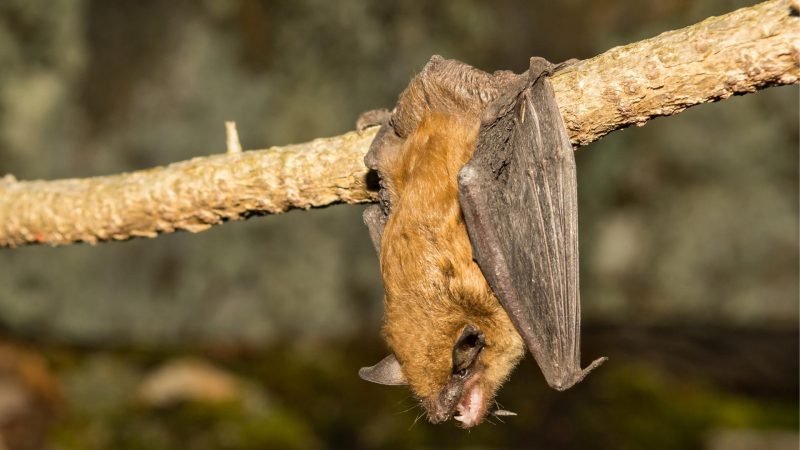
The kind of bat that usually lives in attics is the big brown bat. Scientifically known as Eptesicus fuscus, big brown bats are cavity-roosting bats and are also commonly found in walls, basements, patios, roof gutters, and under the eaves of houses and buildings. They may also live in barns, lofts, caves, mines, and hollow trees.
Big brown bats vary in color from dark chocolate brown to pinkish-tan, and their ears, tail, and wing membranes are usually black. They can grow between 105 and 123 mm (4.1and 4.8 inches) long with 33 teeth and a wingspan of 31-33 cm (12.2-13.0 inches). This bat species is seen in many parts of the United States.
Meanwhile, little brown bats (Myotis lucifugus) and evening bats (Nycticeius humeralis) may also live in attics. As the name implies, little brown bats are small, about 3-5 inches, and weigh between 1/16 and 1/2 ounce.
Evening bats are usually yellow to dark brown and resemble big brown bats, only smaller.
What Do Bats Sound Like in the Attic?
Bats usually make fluttering or scratching sounds while they are in the attic. They may also produce rustling and squeaking noises that resemble the sounds made by mice and squirrels.
Bats also produce sounds while flapping their wings. This usually happens during dusk and dawn, when they are coming out and in.
Contrary to common belief, bats are not blind and in fact, have a very sensitive vision. But instead of using their eyes to hunt for prey, bats use echolocation, wherein they release sounds and rely on the sound that bounces back to their ears.
However, most of these high-pitched sounds are inaudible to human ears.
Where Do Bats Hide in the Attic?
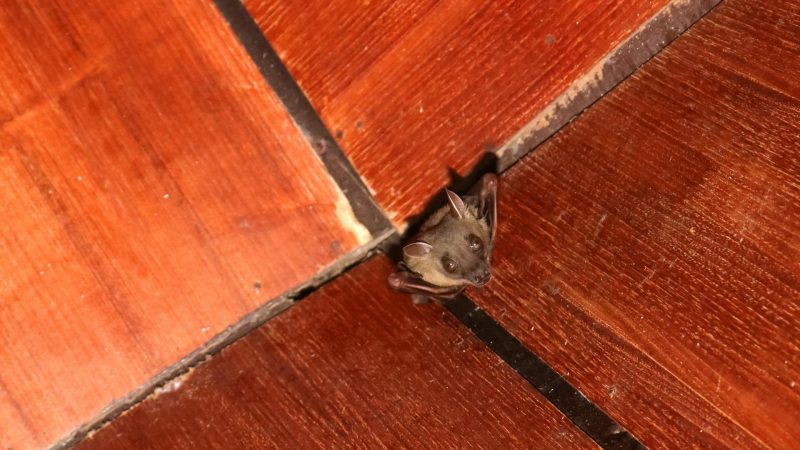
When bats are in the attic, they hide in the darkest parts to avoid light. During fall and winter, bats will also hide in the warmest place in the attic. These winged mammals will also find areas where they can hang upside while sleeping. But more importantly, they will hide in locations where they hunt for insects to eat.
How Do Bats Get In the Attic?
Bats can get in the attic in several areas, including, cracks and crevices in walls, doors, and windows that are left open, damaged screens, roof openings, exhaust vents, chimneys without a cap, tiny gaps where two materials join, and other very small openings. Amazingly, they can also create openings through rotten wood.
How Small an Opening Can a Bat Get Through?
Bats can enter houses by getting through small openings or gaps of about 1/4 x 1 1/2 inches or the size of a quarter. They can also fit into very small holes with a diameter of at least 5/8 inches. Bats don’t chew wood to get inside your house, but they can squeeze their small bodies, especially if predators are after them.
What Attracts Bats to Your House?
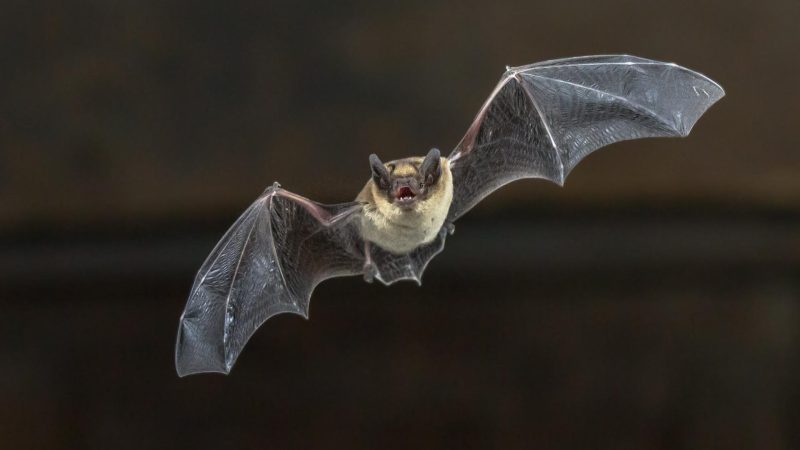
Generally speaking, bats are accidental travelers and are not really attracted to entering houses. In most cases, they are young bats that got lost and accidentally flew through your window and could not get out.
But sometimes, bats will intentionally enter your house if there is food, especially spiders and mosquitoes.
Bats are attracted to enter your house during fall and winter or once the weather starts to get cold. During this time, bats hibernate, and their heart rate will drop from 200-300 beats per minute to only 10 beats per minute.
Some bat species also go through the torpor state, which is the less extreme version of hibernation.
Does One Bat in the House Mean More?
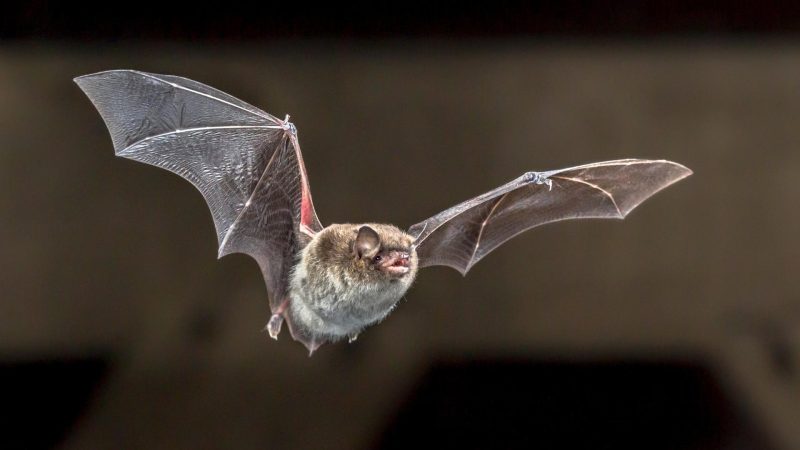
Finding a single bat inside your house doesn’t always mean anything. Bats can be solitary but are more of a social creature. Male bats are usually alone, while most females join groups or start a group of their own.
So, if you see a male bat in your house, it may only be alone. If it is a female, there could be more.
Will Bats Leave On Their Own?
Bats usually leave on their own, especially the lost ones. If they entered your house in the fall to hibernate, they are likely to leave in March or once the weather starts to get warm.
But if bats can tolerate the cold, they will also leave to search for food since flying insects are also not usually active during winter.
What Time of Day Are Bats Active?
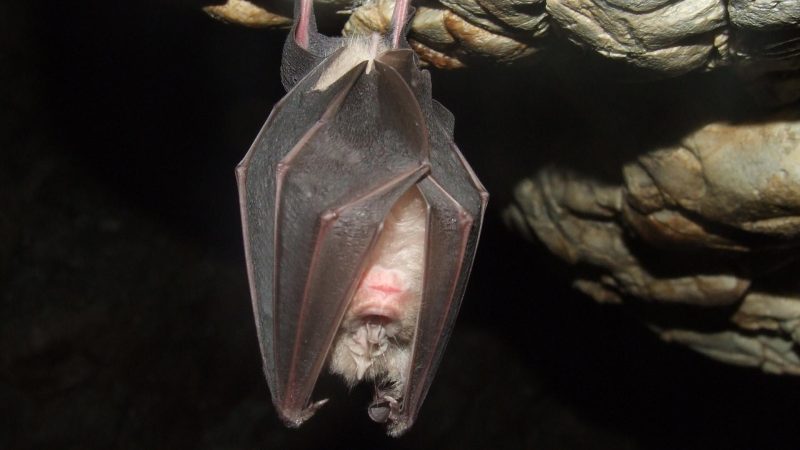
Bats are generally nocturnal creatures, which means that they are mostly active at night. During the day, they groom themselves in caves or sleep, hanging upside down.
Therefore, they commonly appear after dusk and up until dawn. But still, some bat species may be active from 9 AM to 4 PM to hunt for food.
How Do You Know if You Have a Bat Infestation?
Having 1-4 random bats inside your house cannot be considered an infestation. But if you have pregnant bats in your attic, their pups (baby bats) will start to fly 4-5 weeks after birth.
Bats have low reproductive rates, but they can multiply without your knowledge. To help you, here are some signs of a bat infestation:
1. Strange Noises
As mentioned earlier, bats make scratching noises and squeaking sounds in the attic. Note, however, that these sounds can also be produced by squirrels and mice. Some bat sounds may also be inaudible, so you should listen quietly.
2. Bats Flying in and Out
Go out of your house shortly after dusk and before dawn and observe your roof. You may see some bats flying out after dusk and coming back at dawn. Many of them may also enter during winter and will leave in the early spring.
3. Unique Foul Smell
Bat droppings (also called guano) have a very distinct odor of ammonia, and you don’t have to see them before you can smell them. Inhaling large amounts of guano can cause respiratory illness, histoplasmosis. Dead bats also release foul odors.
4. Presence of Bat Droppings
Depending on the species, bat droppings are usually black, dry, oval with rounded or pointed ends, and about the size of a grain of cooked rice. Guano looks like mouse droppings, except that they are mostly spread in small amounts.
5. Bat Urine Stains
Bat urine quickly evaporates but leaves stains on the walls. It also releases a foul odor and contains high levels of uric acid that can cause corrosion in metals. Direct contact with bat urine is also associated with the bacterial disease, leptospirosis.
What Do You Do if You Have Bats in Your Attic?
Unlike vampire bats, most bat species in the US don’t suck human blood. They are not known to be aggressive and rarely bite humans. In fact, bats are more afraid of humans than humans are scared of them.
So, if you have some bats in your attic, here are some very important do’s and don’ts when dealing with them:
- Inspect your attic thoroughly to know how many bats there are. If there are only very few of them, open the doors and windows so they can leave peacefully.
- Bats bite in self-defense, and their bites may contain rabies. So, don’t chase bats in the attic if they have no way out.
- If you have pet cats or dogs, don’t let them chase the bats. Some bats have parasites such as fleas and ticks that can transfer to your pets.
- If the bats are weak or at rest on the wall, don’t catch them with bare hands. Instead, wear safety gloves and place a container over them. Then, insert a piece of cardboard between the container and the wall, and release them outside your house.
- You may also wait until nighttime when they leave to hunt for food outside. Once they are all gone, think of ways to prevent them from coming back.
Will Lights in the Attic Keep Bats Out?
Turning the lights on in the attic will not automatically keep bats out. Bats are known to avoid areas with bright lights as much as possible. However, they will just move to hidden or hard-to-access areas in your house once you turn on the lights.
This will make it more difficult for you to drive them out of your house.
What Do Bats Hate the Most?
Lights are what bats hate the most. This includes any kind of bright light, such as street lights. This is because they are used to living in darkness, and lights disturb them a lot.
Their insect foods are mostly available during the day, but a study suggested that bats are fewer in street-lit locations than in dark areas.
How to Get Rid of Bats in the Attic?
In some cases, bats may not leave the attic by themselves. In that case, you should do some drastic actions. But because they are very beneficial to the environment and it is illegal to kill certain bat species, here are some humane ways to get rid of bats in the attic:
- Install fans in the attic. This will make the temperature unsuitable for them, especially in the colder months.
- Don’t put mothballs in attics or any crawl spaces. They contain naphthalene that can poison humans and bats. Besides, mothballs are also illegal unless used according to the label.
- Install a one-way door in the attic to allow bats to come out but cannot re-enter. The Batcone II Reusable Bat Exclusion is a great example of an effective one-day door.
- Hang non-toxic polypropylene bird netting such as Dalen Bird X Protective Mesh Netting above their exit points. This will also prevent them from coming back.
How Do You Scare Bats Away?
As mentioned earlier, bats are afraid of humans. They easily panic once they sense people around. So, whether bats are inside or outside your house, here are some ways to scare bats away without hurting them.
- Turn on the lights on their roosting areas, especially at night.
- Alternatively, put Mylar balloons or hang aluminum foil. Both of them have reflective surfaces that repel bats.
- Bats are disturbed by noise. You may play loud music, bang metals, or scream aloud.
- Alternatively, install ultrasonic noise-makers such as CLEANRTH CB006 Advanced Ultrasonic Bat Repelling System.
- Bats also hate the smell of essential oils such as peppermint and spearmint.
- Some non-toxic bat repellents such as Bonide Repellent Bat Magic are effective in scaring bats away.
How to Keep Bats Out of Your Attic?
Bats eat pest insects such as mosquitoes and are great pollinators. Bats also eat fruits and help in distributing seeds in the forest. They don’t damage properties and don’t attack humans unless provoked.
But because they can also be dangerous pests, here are some things you can do to keep them out of your attic.
- Identify all possible entries and seal them properly. For very small cracks that bats can still pass through, use a caulking compound or expanding foam insulation such as Loctite TITE FOAM Insulating Foam Sealant.
- Since bat-proofing your house is not always a guarantee that bats will no longer enter and can be stressful to pregnant bats, you can also install a bat house such as Kenley Bat House – Outdoor Bat Box Shelter with Single Chamber instead of making one. This product is specifically designed for bats and is ready to install.
Summary
Whatever bat control or preventive action you do, make sure that there are no pups in your attic. If there are still baby bats, wait until they are old enough to fly with their mother.
Otherwise, they will die in hunger and can cause more trouble. Bat populations are also now declining, so we should protect the remaining ones.